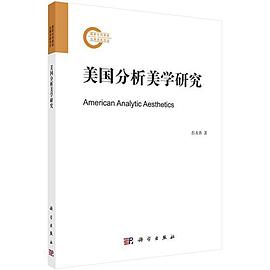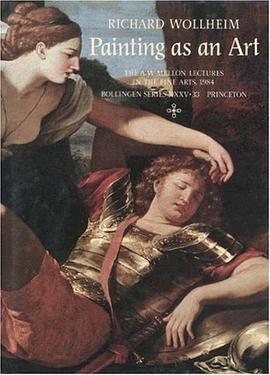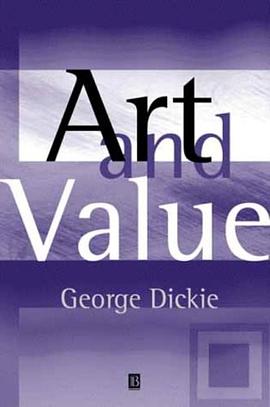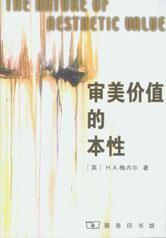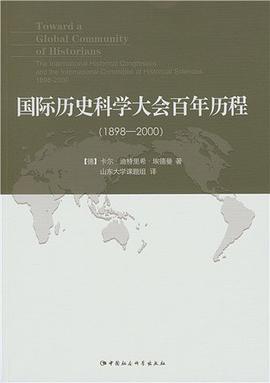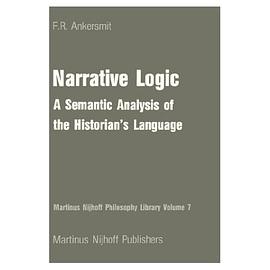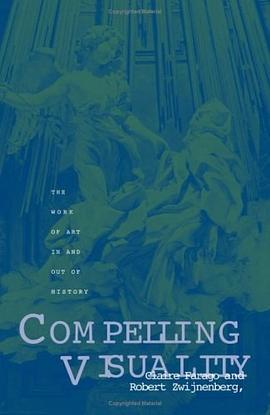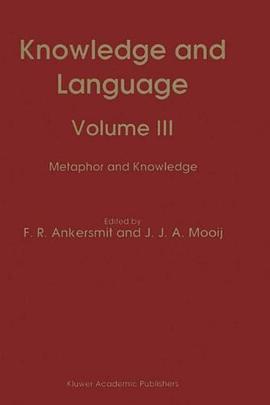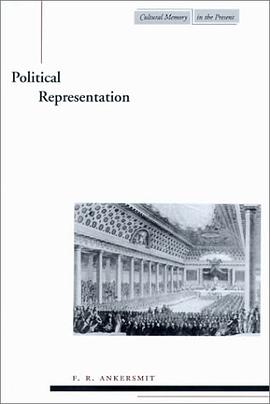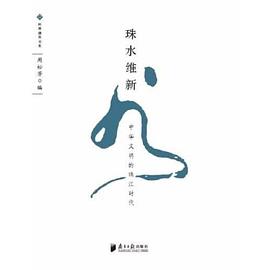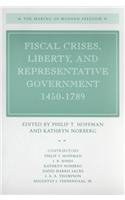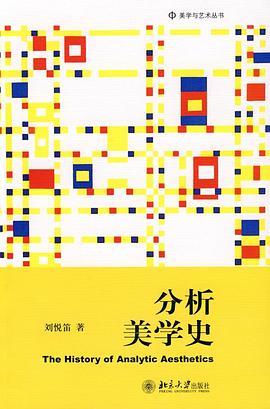

具體描述
分析美學是20世紀後半葉以後在西方唯一占據主流位置的重要美學流派。《分析美學史》掌握大量一手資料,是國內的首部《分析美學史》。上編以重要的分析美學傢為綫索,力求將分析美學史上具有裏程碑式的思想加以深描。下編為分析美學“問題史”,以主題為樞紐,解讀分析美學的數個核心問題。
著者簡介
劉悅笛,中國社會科學院哲學所副研究員,國際美學協會(IAA)五位總執委之一,中華美學學會常務理事兼副秘書長,中國文藝理論學會理事,《美學》雜誌執行主編。北京大學哲學係博士後,碩士生導師,“美學藝術學譯文叢書”主編,“北京大學美學與藝術叢書”主編, 國際中西哲學比較研究學會(ISCWP)會員,韓國藝術哲學學會(KAPA)顧問。Comparative Philosophy英文雜誌編委,《外國美學》編委,《中國藝術教育》編委,“美學設計藝術教育叢書”編委。
圖書目錄
序………………………………………………………………柯提斯•卡特
導言 分析美學:方法,模式與曆史
一 “語言分析”之於分析美學
二 分析美學的“分析”工具
三 從“分析的”哲學史到美學史
四 “分析美學史”的曆史考量
五 分析“分析美學”的價值
上 編 分析美學思想史
第一章 維特根斯坦:作為“語言分析”的美學
一 從劃定“語言界限”到描述“語言使用”
二 “美是使人幸福的東西”
三 “不可言說的”與“超驗的”美學
四 從學科消解到“美學”的概念使用
五 “生活形式”的廣闊“文化語境”
六 “語言遊戲”•“傢族相似”•“開放的概念”
七 視覺的分殊:“看見”與“看似”
八 生活的取嚮:“自然而然的日常美學”
九 其他幾朵散落的“美學火花”
十 述評:兩種維特根斯坦與兩類美學
第二章 比爾茲利:作為“元批評”的美學
一 從《美學》到《審美的觀點》
二 “分析美學”的首度“體係化”
三 “藝術—批評—美學”
四 “審美—經驗—藝術”
五 “審美意圖—藝術行為—藝術品”
六 “意圖謬見—感受謬見”
七 述評:從批駁者的“批駁”來看
第三章 沃爾海姆:作為“視覺再現”的美學
一 心靈哲學、觀看繪畫與精神分析
二 從《藝術及其對象》到《作為一種藝術的繪畫》
三 作為一種“生活形式”的藝術
四 反對“錯覺說”與置疑“相似論”
五 作為思想內核的“看進”理論
六 論“再現性觀看”的“雙重性”
七 作為另一基石的“錶現性”
八 論“類型”與“標誌”的區分
九 “作為藝術的圖繪”為何有趣?
十 述評:從思想的“內在矛盾”觀之
第四章 古德曼:作為“藝術語言”的美學
一 從“構建世界的方式”到“符號係統理論”
二 從《藝術的語言》到《概念重構》
三 完整圖景:審美徵兆與非審美徵兆
四 內在差異:草圖、手跡與樂譜
五 從“再現”、“錶現”到“例示”
六 論“贋品”與“風格”問題
七 從“何為藝術”到“何時為藝術”
八 作為“真理認識”的審美與藝術
九 述評:“唯科學主義”的偏狹影響
第五章 丹托:作為“藝術敘事”的美學
一 從分析哲學、曆史敘事到分析美學
二 美學起點:1964年獨創的“藝術界”理論
三 藝術本體:1974年構建的“平凡物的變形”說
四 美學轉摺:1984年重闡的“藝術終結”觀念
五 藝術史哲學:1997年成形的“終結之後”理論
六 重思美學:2003年反思的“美的濫用”思想
七 述評:從“本質主義”與“曆史主義”的悖論看
第六章 迪基:作為“藝術慣例”的美學
一 闡釋新藝術形態的美學
二 解構:1964年破除“審美態度神話”
三 建構:1974年總結“藝術慣例論”
四 重構:從“早期觀點”到“晚期觀點”的修正
五 模式:1988年評價“藝術評價”
六 述評:與布爾迪厄的“慣習”理論比較
下 編 分析美學問題史
第七章 “藝術定義”:從維茨到列文森
一 分析美學“藝術定義”的六套方案
二 邏輯起點:“藝術不可定義”論
三 邏輯轉換:從“功能定義”到“程序定義”
四 邏輯終點:“曆史性”定義藝術論
五 對分析美學“定義方法”的五個評判
六 新的定義:在自然主義與曆史主義之間
第八章 “審美經驗”:從迪弗到卡羅爾
一 分析美學視野中的“康德悖論”
二 比爾茲利與迪基的“審美之辯”
三 曆史上的“審美經驗諸概念”
四 轉型中的“審美經驗的終結”
五 從“消解審美”到“審美復興”
六 新的經驗:復歸於“一個經驗”
第九章 “美學概念”與“文化解釋”:從西伯利到馬戈利斯
一 從“審美概念”的語言實質談起
二 “審美與非審美”的依存關係
三 從“客觀屬性”到“文化屬性”
四 以“文化同一性”為視角來看
五 新的解釋:“共識觀”與“解釋學”的統一
結語 分析美學之後:緣何衰微?未來何在?
一 “語言分析”究竟有什麼對與錯?
二 “分析美學”將美學誤導到何方?
三 分析與大陸美學的融閤:以卡維爾為例
四 “迴到經驗”•“迴歸生活”•“迴復自然”
附錄:
1與阿瑟•丹托對話錄
2約瑟夫•馬戈利斯訪談錄
3與柯提斯•卡特對話錄
4彼得•拉瑪剋等訪京側記
參考文獻
後記
The History of Analytic Aesthetics
Liu yuedi
Introduction Analytic Aesthetics: Method, Modes and History
1. “Language Analysis” and Analytic Aesthetics
2. “Analysis” as a Tool in Analytic Aesthetics
3. Between the History of Analytic Philosophy and Analytic Aesthetics
4. Five Phases of the History of Analytic Aesthetics
5. The Value of Analyzing Analytic Aesthetics
Part 1
Chapter 1 Wittgenstein: Aesthetics as Language Analysis
1. From “The Limits of Language” to “The Use of Language”
2. “The Beautiful Is What Makes Happy” in 1914-1916
3. The Inexpressible “Shows” Itself and Aesthetics Is Transcendental
4. The Use of Aesthetic Concept in Cambridge Lectures
5. Form of Life and Its Broad Cultural Context
6. Language-game, Family Resemblances and Open Concept
7. “Noticing An Aspect" and “See As …” in Visual Aesthetics
8. Everyday Aesthetics of Itself as a Whole
9. Other Aesthetic Thoughts
10. Two Wittgensteinism and Two Aesthetics
Chapter 2 Monroe Beardsley: Aesthetics as Meta-criticism
1. From Aesthetics to The Aesthetic Point of View
2. The Systematization of Analytic Aesthetics
3. Art - Criticism - Aesthetics
4. Aesthetic- Experience - Art
5. Aesthetic Intention - Art Activity - Artwork
6. The Intentional Fallacy - The Affective Fallacy
7. Monroe Beardsley and His Critics
Chapter 3 Richard Wollheim: Aesthetics as Visual Representation
1. Philosophy of Mind, Seeing Painting and Psychoanalysis
2.From Art and Its Objects to Painting As an Art
3. Art as “a Form of Life”
4. On Illusion and Resemblance
5. “Seeing-in” as One Foundation
6.Twofoldness in Representational Seeing
7. “Expressiveness” as Another Foundation
8. The Difference Between Types and Tokens
9. “Why is Drawing Interesting ?”
10. Richard Wollheim and his Contradictions
Chapter 4 Nelson Goodman: Aesthetics as Art Language
1. From Ways of Worldmaking to Theory of Symbol Systems
2. From Languages of Art to Reconceptions
3. Aesthetic Symptom and Nonaesthetic Symptom
4. Difference Between Sketch, Script and Score
5. From Representation, Expression to Exemplification
6. Authenticity and Style in Arts
7. From “What is Art” to “When is Art”
8. Art and Aesthetic Experience as a cognition to Truth
9. Nelson Goodman and his Scientificism’s Influences
Chapter 5 Arthur Danto: Aesthetics as Art Narrative
1. From Analytical Philosophy, Historical Narrative to Analytical Aesthetics
2. At the Beginning:“Artworld” in 1964
3. Art Ontology:“Transfiguration of Commonplace” from 1974
4. Turning Point:“The End of Art” in 1984
5. Philosophy of Art History: “After the End of Art” till 1997
6. Rethinking Aesthetics: “The Abuse of Beauty” in 2003
7. Antinomy Between Essentialism and Historicism
Chapter 6 George Dickie: Aesthetics as Art Institution
1. Aesthetics for the sake of New Art
2. Deconstruction of the Aesthetic Attitude in 1964
3. Construction of the Institutional Theory of Art in 1974
4. From the earlier version to the later version till 2004
5. About Some modes of Art Evaluating in 1988
6. Comparative to Bourdieu’s Theory about Habitus
Part 2
Chapter 7 Definition of Art: From Morris Weitz to Jerrold Levinson
1. Six Schemes in Definition of Art
2. Art can’t be defined
3. From Functional to Procedural Definition
4. Defining Art Historically
5. Five Remarks on Definition of Art
6. New Definition: Between Naturalism and Historicism
Chapter 8 Aesthetic Experience: From Thierry de Duve to Noël Carroll
1. “Antinomy of Kant” in Analytic Perspective
2. “The Beardsley-Dickie Debate”
3. Some Concepts of Aesthetic Experience
4. “The End of Aesthetic Experience”
5. From Deconstruction to Reconstruction
6. New Experience: Returning to “An Experience”
Chapter 9 Aesthetic Concept and Cultural Interpretation: From Frank Sibley to Joseph Margolis
1. About Aesthetic Concept’s Nature
2. The Aesthetic and Nonaesthetic Relationships of Dependence
3. From Objectivity to Culturality in Aesthetics
4. From Cultural Identity’s Perspective
5. New Interpretation: Unification between Consensus Theory and Hermeneutics
Conclusion
1. Language Analysis:Right or Wrong?
2. Analytic Aesthetics and Misunderstandings of Aesthetics
3. Bridge between Analytic and Continental Aesthetics:Stanley Cavell as an example
4. New Directions: Returning to Experience, Everyday-life and Nature
Appendices:
1. Conversation with Arthur Danto
2. Conversation with Joseph Margolis
3. Conversation with Curtis L. Carter
4. The Impression of Peter Lamarque and Others’ Visits
· · · · · · (收起)
讀後感
評分
評分
評分
評分
用戶評價
可當做一個大型bibliography來讀,編排也好(上篇寫人物、下篇寫話題);仔細讀發現介紹的一些理論(居然)可以配閤形成一個有點整體形象的美學體係(!);丹托的訪談值得一看。多說一句,大體結構是編年史,估計是分析美學『史』的綫索不明,沒能嵌入英美哲學的大背景更可能是美學自己不行(而不是作者沒搞清楚)。再鬍亂多扯一句,柑橘 美學引入的分析哲學資源可能快要甚至已經耗盡瞭,以及能寫入“史”的小學科的話題可能大多已經(由於核心論證已被給齣而)冷卻掉瞭
评分寫的其實不錯,但有些過於囉嗦瞭
评分可當做一個大型bibliography來讀,編排也好(上篇寫人物、下篇寫話題);仔細讀發現介紹的一些理論(居然)可以配閤形成一個有點整體形象的美學體係(!);丹托的訪談值得一看。多說一句,大體結構是編年史,估計是分析美學『史』的綫索不明,沒能嵌入英美哲學的大背景更可能是美學自己不行(而不是作者沒搞清楚)。再鬍亂多扯一句,柑橘 美學引入的分析哲學資源可能快要甚至已經耗盡瞭,以及能寫入“史”的小學科的話題可能大多已經(由於核心論證已被給齣而)冷卻掉瞭
评分可當做一個大型bibliography來讀,編排也好(上篇寫人物、下篇寫話題);仔細讀發現介紹的一些理論(居然)可以配閤形成一個有點整體形象的美學體係(!);丹托的訪談值得一看。多說一句,大體結構是編年史,估計是分析美學『史』的綫索不明,沒能嵌入英美哲學的大背景更可能是美學自己不行(而不是作者沒搞清楚)。再鬍亂多扯一句,柑橘 美學引入的分析哲學資源可能快要甚至已經耗盡瞭,以及能寫入“史”的小學科的話題可能大多已經(由於核心論證已被給齣而)冷卻掉瞭
评分寫的其實不錯,但有些過於囉嗦瞭
相關圖書
本站所有內容均為互聯網搜索引擎提供的公開搜索信息,本站不存儲任何數據與內容,任何內容與數據均與本站無關,如有需要請聯繫相關搜索引擎包括但不限於百度,google,bing,sogou 等
© 2025 book.quotespace.org All Rights Reserved. 小美書屋 版权所有

